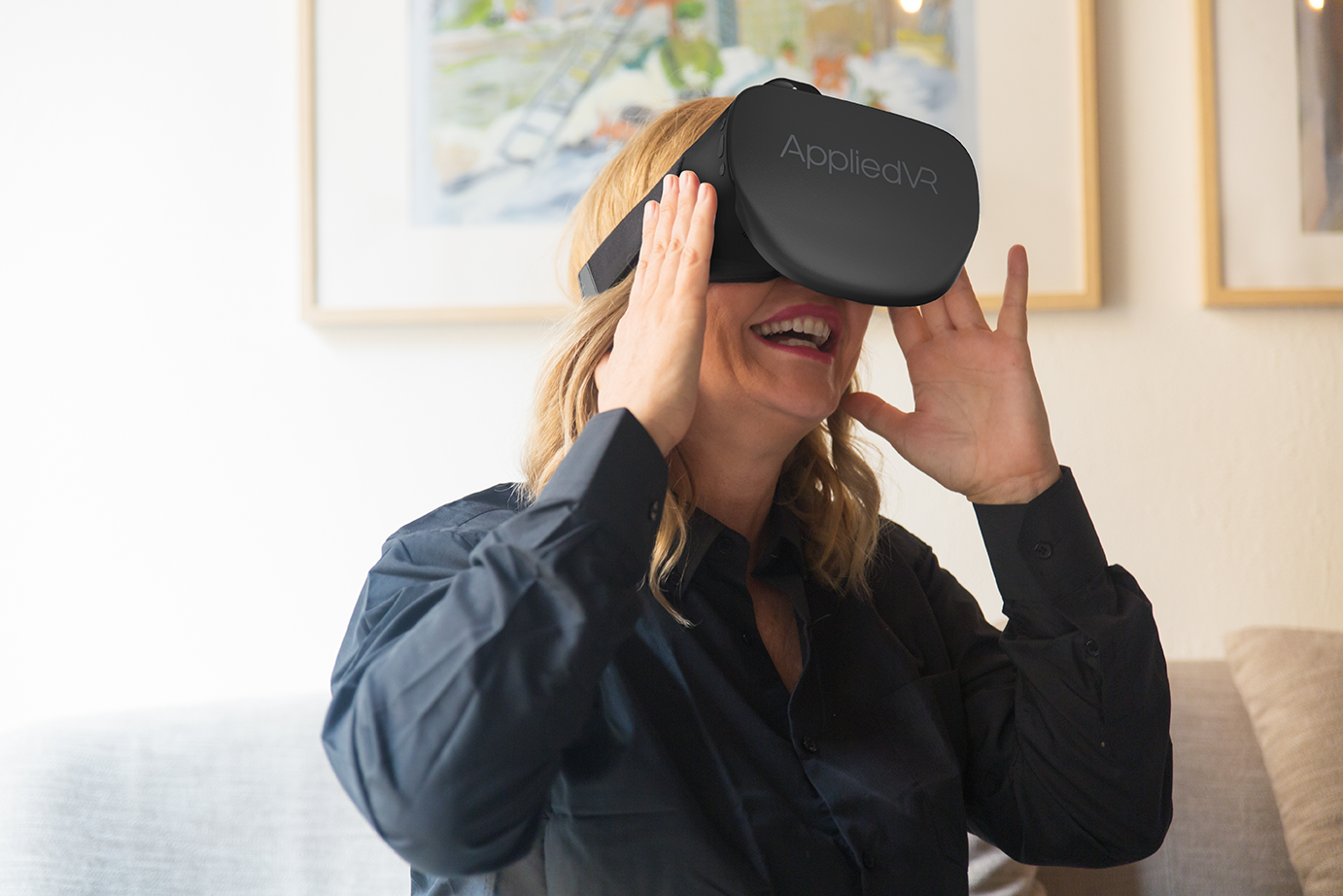
AppliedVR raised $36 million in funding as it pursues de novo clearance of its first digital therapeutic. Photo credit: AppliedVR
AppliedVR closed another round of funding as it pursues clearance from the Food and Drug Administration for its first digital therapeutic. The company, which aims to use VR for pain management, recently closed a $36 million series B round.
The company has breakthrough designations for two digital therapeutics: VR-based programs for treatment-resistant fibromyalgia and chronic intractable lower-back pain. It recently submitted a de-novo application to the FDA after completing a pivotal study of its program for chronic lower back pain.

Improving the Healthcare Financial Experience to Help Care Flow
Zelis CEO Amanda Eisel shares her perspective on how the company is solving the problems of a fragmented health financial system to benefit all.
AppliedVR’s programs are based on pain management techniques. For example, a person might walk through guided breathing exercises, reflected in a virtual nature scene.
The company got its start in hospitals, using VR more broadly for pain management. Early on, it collaborated with Cedars Sinai to determine whether there was a use for VR headsets in a hospital setting. The startup says it has worked with 200 health systems so far.
AppliedVR has now raised a total of $71 million to date, with its most recent funding round including investments from F-Prime Capital, JAZZ Venture Partners, Sway Ventures and SVB Ventures.
“Virtual reality is now a smart, practical and effective therapy for healthcare because of innovations from companies like AppliedVR,” JAZZ Venture Partners Managing Director Zack Lynch said in a news release. “As the pandemic demonstrated, the U.S. healthcare system desperately needs more care access through scalable solutions that are available in people’s homes, and potent therapeutics delivered with VR are a perfect solution.”

Using Data to Help Healthcare Practices Succeed
A new report from Relatient, A Data-Driven Guide to Patient Access Succes, highlights how focusing on data accuracy and relevance can enhance the performance of healthcare practices.
AppliedVR plans to use the funds to prepare for market launch of its first digital therapeutic, EaseVRx. It also plans to finish more pilots with payers, conduct more clinical research, and to build out its product pipeline.








